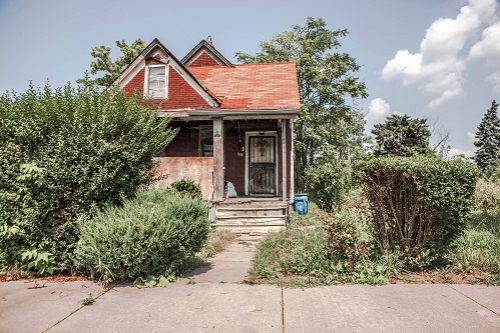What is an HO-8 policy?
“An HO-8 policy is reserved for [historic] homes or homes that are considered unique in construction and building materials,” says Marlen Brito, personal lines account manager at World Insurance Associates LLC in Worcester, MA.
These homes may not qualify for a regular HO-3 homeowners policy because the cost to rebuild them exceeds the market value.
HO-8 policies usually have the same general coverage sections as a standard home policy but only pay out actual cash value rather than replacement value. They also cover only the named perils outlined in the policy.
What does an HO-8 homeowners policy cover?
HO-8 policies are broken down into the following coverage sections, much like standard HO-3 home policies:
Dwelling. Dwelling coverage is also called Coverage A, and pays to rebuild the structure of your home if it’s damaged or destroyed.
Other structures. Other structures coverage protects detached structures like fences, sheds, gazebos and guest houses.
Personal liability. The personal liability coverage part of your policy provides coverage for property damage and bodily injury to others when you’re responsible.
Personal property. Personal property coverage protects your belongings.
Loss of use/Additional living expenses. Also called ALE, this pays for a place to stay and other expenses if your home is being repaired and you can’t stay there.
Medical payments. Medical payments coverage pays medical bills if someone is injured on your property regardless of fault.
You must be aware that your policy will only pay out if your home was damaged by the following named perils:
- Fire
- Wind and hail
- Smoke
- Vehicle damage
- Explosions
- Volcanic eruptions
- Vandalism and theft
- Riots or civil unrest
- Aircraft
An important thing to note is that HO-8 policies pay claims based on the actual cash value of your house and belongings– not the replacement cost value. Actual cash value includes depreciation and isn’t the amount it would cost to rebuild your home today.
What isn’t covered by an HO-8 homeowners policy?
Some common exclusions to an HO-8 homeowners policy are:
- Floods
- Earthquakes
- Pest infestations
- Mold
- Sewer backups
These particular exclusions are typical of every homeowners policy. You can buy added coverage for some of these situations through an endorsement or rider. Flood insurance policies are sold separately.
While flood is generally excluded from every home policy, be aware that other types of water damage may be excluded from HO-8 coverage as well– like burst pipes. A regular HO-3 policy usually covers this. The same goes for falling tree branches. Do your research and ask questions of your insurance carrier to know exactly what an HO-8 policy might not handle.
How much HO-8 policy coverage do you need?
Check the requirements of your mortgage lender if you have a loan– an HO-8 policy’s basic coverage might not cut it. You may need to increase coverage to satisfy the lender.
You might be limited by the amount of coverage available on an HO-8 policy. If this type of policy won’t meet your needs, you may need to look around for an insurance company that will insure your home on a replacement cost policy.
Who needs an HO-8 policy?
If your home is over 40 years old, a historic home or a registered landmark, you may need to look into an HO-8 policy.
If your home is unique or has very unusual architecture, these features could make it hard to determine its value because it’s not comparable to other homes on the market. This may be another situation suitable for an HO-8 policy.
Although 40 years old is the standard for “older” homes, many homes over 40 years old will still qualify for an HO-3 policy; HO-8 coverage shouldn’t be your first choice.
How much does an HO-8 policy cost?
HO-8 policies tend to be more expensive, considering the coverage they provide. One reason is that historic homes or homes with unusual architectural features may be more costly to restore. Unique building materials tend to be more expensive as they are niche products.
You may end up paying more out of pocket for repairs to your home as these policies usually pay claims out on an actual cash value basis rather than a replacement cost basis.
What is the difference between an HO-3 and an HO-8 policy?
HO-3 policies are standard homeowners policies and provide solid all-around coverage. In contrast, HO-8 policies offer less, more specific coverage.
| Type of damage | Covered by HO-3? | Covered by HO-8? |
|---|---|---|
| Falling tree branches | Yes, unless caused by neglect | No, unless specifically caused by a windstorm |
| Fire | Yes | Yes, but only pays cash value |
| Burst/frozen pipes | Yes | No |
| Flood | No | No |
| Roof caving in from snow | Yes | No |
| Earthquake | No | No |
HO-8 insurance companies
Not every insurance carrier offers HO-8 policies. Look for a company that offers modified coverage form or historic home insurance. Your best bet might be working with an insurance broker who can research different companies on your behalf. This is especially true if your home is historic or has hard-to-replace features.
Even companies that offer HO-8 insurance won’t write a policy for every home or in every area. Do your research to find the best insurance company for your older home.





